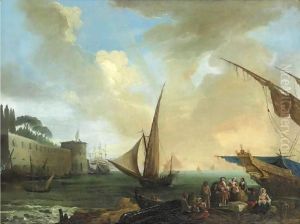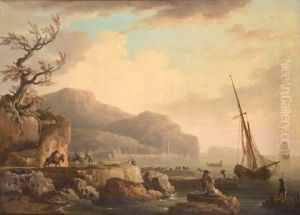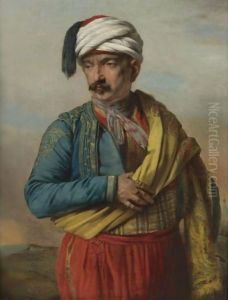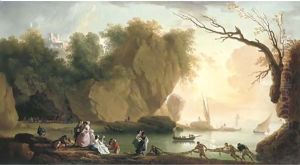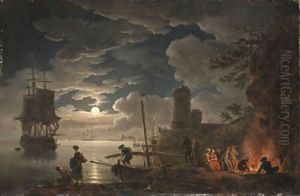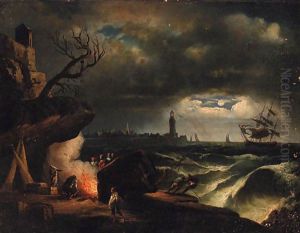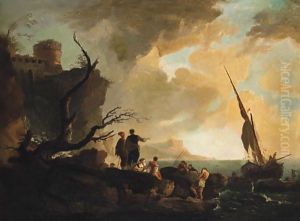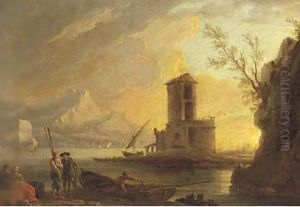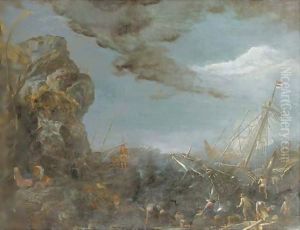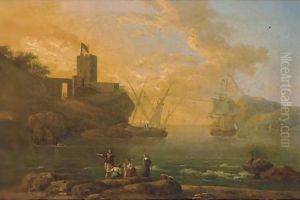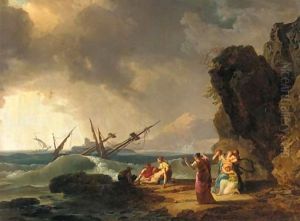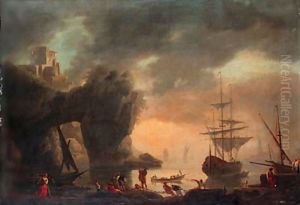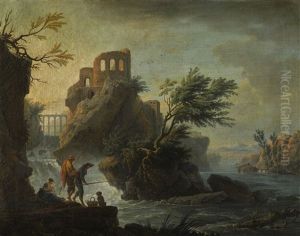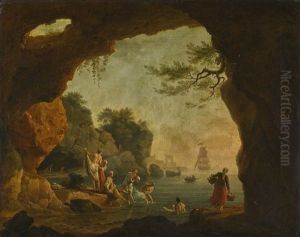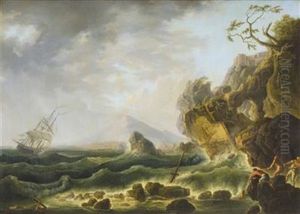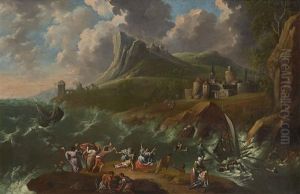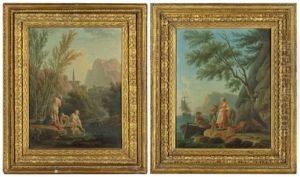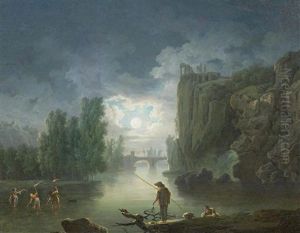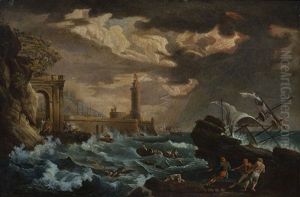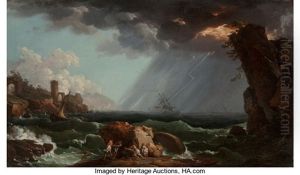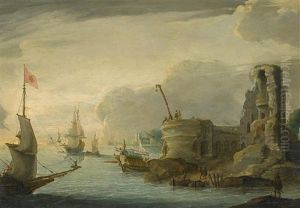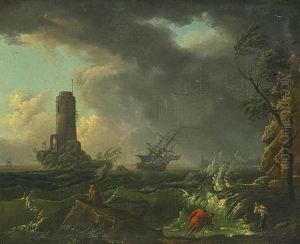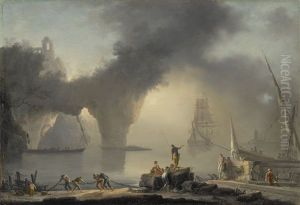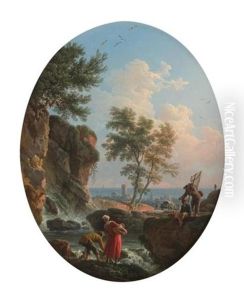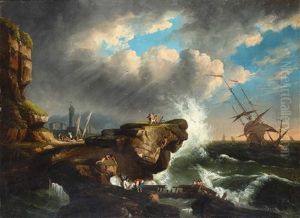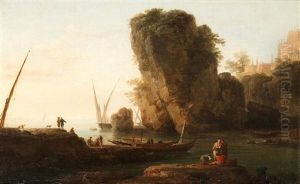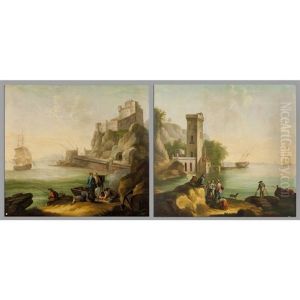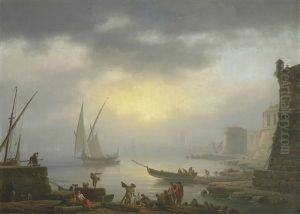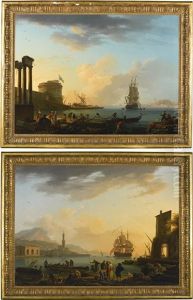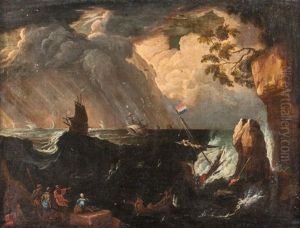Vernet Claude Joseph Paintings
Claude Joseph Vernet was a French painter born on August 14, 1714, in Avignon, France. He was best known for his marine paintings, which captured the essence of seascapes with a remarkable sense of realism and emotion. Vernet's early exposure to art came from his father, Antoine Vernet, who was a skilled decorative painter. His initial training was under his father's guidance, followed by his move to Italy at the age of 20, where he furthered his studies and was significantly influenced by the naturalistic landscapes of the Roman Campagna.
Vernet lived in Italy for about 20 years, during which he developed a profound appreciation for the beauty of nature, which would become a hallmark of his work. His paintings from this period show a keen observation of natural phenomena and a meticulous approach to depicting maritime scenes. In 1753, he returned to France upon the request of King Louis XV and was commissioned to paint the ports of France. This project, which consisted of 15 views of the major seaports of France, is considered his masterpiece and significantly boosted his fame and success.
Throughout his career, Vernet remained committed to the principles of the French Academy, focusing on the idealization of nature while also paying close attention to detail and accuracy. His works were celebrated for their technical excellence, compositional mastery, and the ability to convey the mood and atmosphere of the scenes he portrayed.
Vernet's influence extended beyond his lifetime, as he was seen as a pivotal figure in the development of landscape and marine painting in the 18th century. His son, Antoine Charles Horace Vernet, and his grandson, Horace Vernet, also became prominent artists, continuing the family legacy.
Claude Joseph Vernet passed away on December 3, 1789, in Paris, leaving behind a rich oeuvre that has been admired for its contribution to the naturalistic portrayal of maritime landscapes. His works are preserved in many major museums around the world, reflecting his enduring legacy in the history of art.


